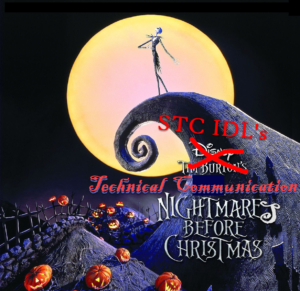by Jannetta Lamourt
“Disability is part of the human experience and one of the variables that contribute to the rich diversity of our nation. Disability is not a static condition—people can experience a disability from birth or develop a disability due to genetics, aging, or trauma. Disability does not discriminate—anyone can acquire a disability, at any time.” (U.S. Dept of Education)
Accessibility = able to access
We understand the need for wheelchair ramps, Braille signs, and crosswalk beacons in a physical world. But why does accessibility matter in social media?
Over 40 million people in America report some level of disability in their daily lives. Social media as a tool for connection is vital for those who cannot leave home or who find the outside world challenging to navigate or to connect to, socially. Accessibility design in social media means handling the text and images in an “inclusive design” to assist as many people as possible. Luckily, anything you add or change to make text or images accessible makes it accessible for all viewers.
Whether for personal or business needs, follow these tips for writing and displaying social media content. You’ll stand out in a world of websites that ignore accessibility:
1. Plain Language Required
Have you heard of the Plain Writing Act of 2010? It requires government agencies to use precise language in documents presented to the public following the Federal Plain Language Guidelines. The people reading the documents must be able to:
- Find what they need
- Understand what they find
- Use what they find to meet their needs (Source: FPLG)
The goal for these guidelines applies to any document or social media message—clear, correct, and understandable.
2. Closed Captions
While closed captioning is common on television, much of the current social media content lacks audio cues or an enriched description of sounds and background music. Subtitles only provide the text for the spoken words and, while helpful, do not ignite the imagination of those people with hearing impairments.
3. Text Descriptions for Images
Consider an image of a red ball in a blog post. Alternative Text or “Alt Text” is a brief written description for online images. It completes the picture for the sight disabled beyond the facts. A child with a ball tells the listener the basics, but alt text describes the child “as a toddler holding a large red ball in a blue snowsuit.” Alt text also enhances your search engine optimization (SEO) and displays when an image file cannot load for technical or security reasons.
4. Strong Color Contrast
Choose colors for backgrounds and text with a significant difference in light and dark tones. Additionally, colorful text against a dark background is tricky for people with sight-impairments to read accurately. Best practice requires a 4.5:1 color contrast ratio. Online tools such as the Web Content Accessibility Guidelines (WCAG) Color Contrast Checker help the writer or designer check the color balance and text readability on the webpage.
5. Camel Case for Hashtags
Hashtags present a different issue for screen readers. Using the camel case method, which uses capital letters to distinguish between words, benefits many. Which is easier to understand, #HeLovesFlyingSquirrels or @helovesflyingsquirrels?
6. Descriptive Calls-To-Action (CTA)
As a technical or UX writer, call to action text tells the reader what action to take to fulfill the primary goal, such as, Buy now or Learn more on buttons embedded into a webpage or social post. Without a concise and direct CTA, a catalog page with many links to products may confuse the listener when read out by adaptive technology.
- Use unique link text
- Keep the text short yet meaningful
- Link two words rather than one
- Do not use the word “link” as a link in your text
In addition, consider the length and content of the embedded URL. It’s best to use dedicated URLs for content. Imagine speaking the following URL: www.sparkplugs.edu/%&#@stuck_html versus www.sparkplugs.edu/how_to_remove. Keyboard users or users who cannot move their hands or click a mouse can better navigate the second URL.
Writing content to enhance the experience for all people is vital in today’s diverse world. Take the time to consider how your web content adds context and clarity for all users —it is the right thing to do.
Jannetta Lamourt
Sept 21, 2021
STC IDL SIG Social Media Director


